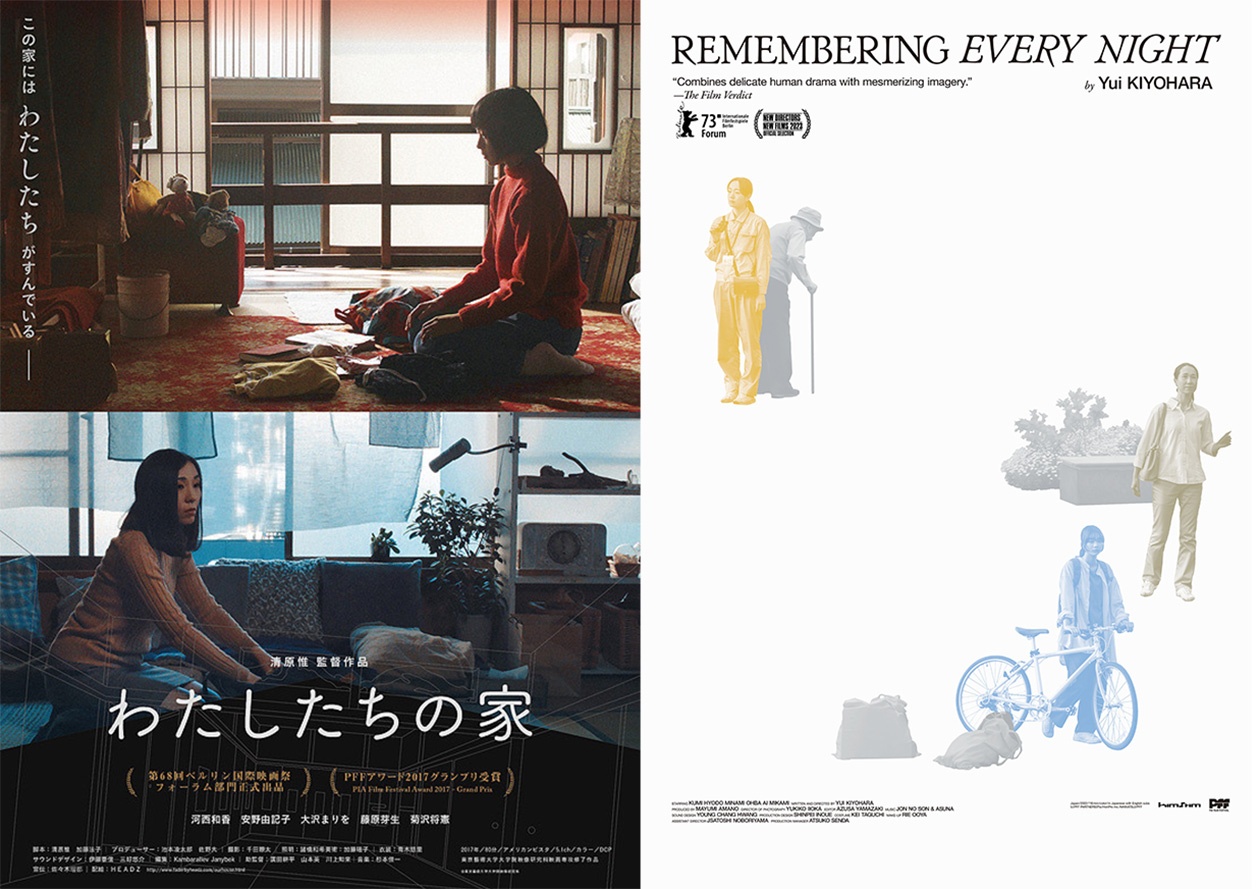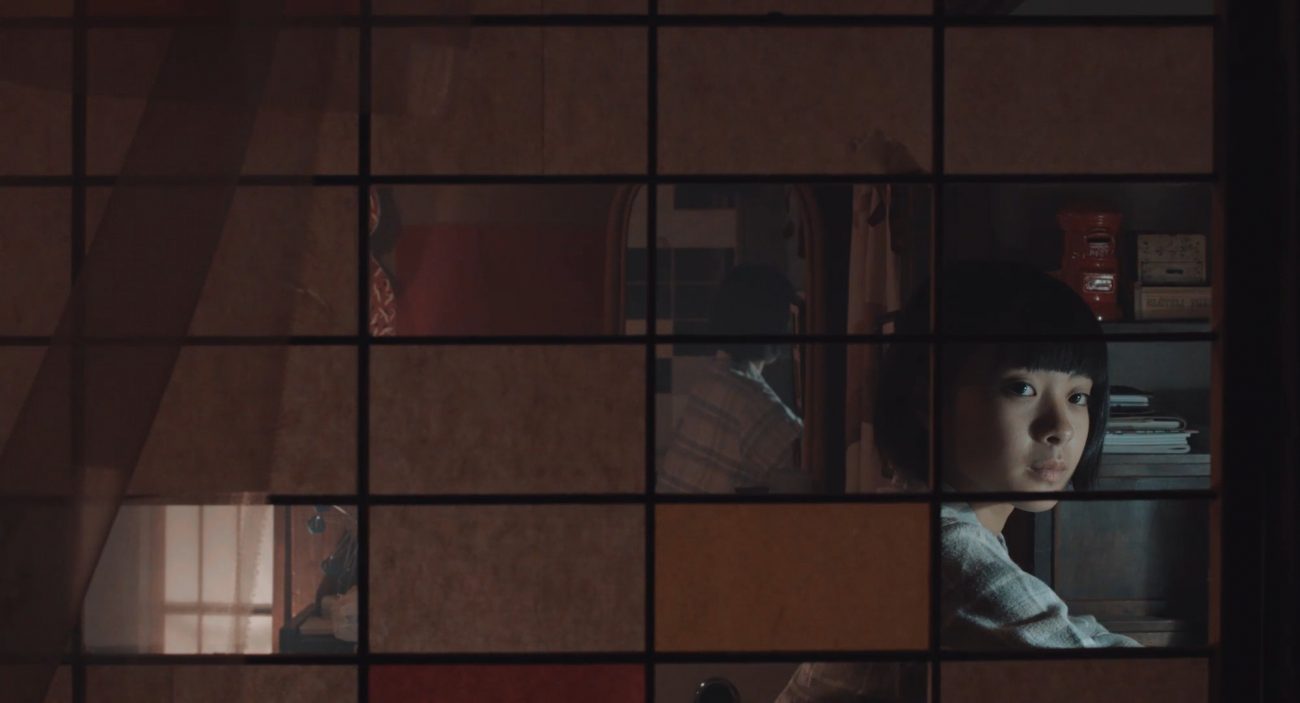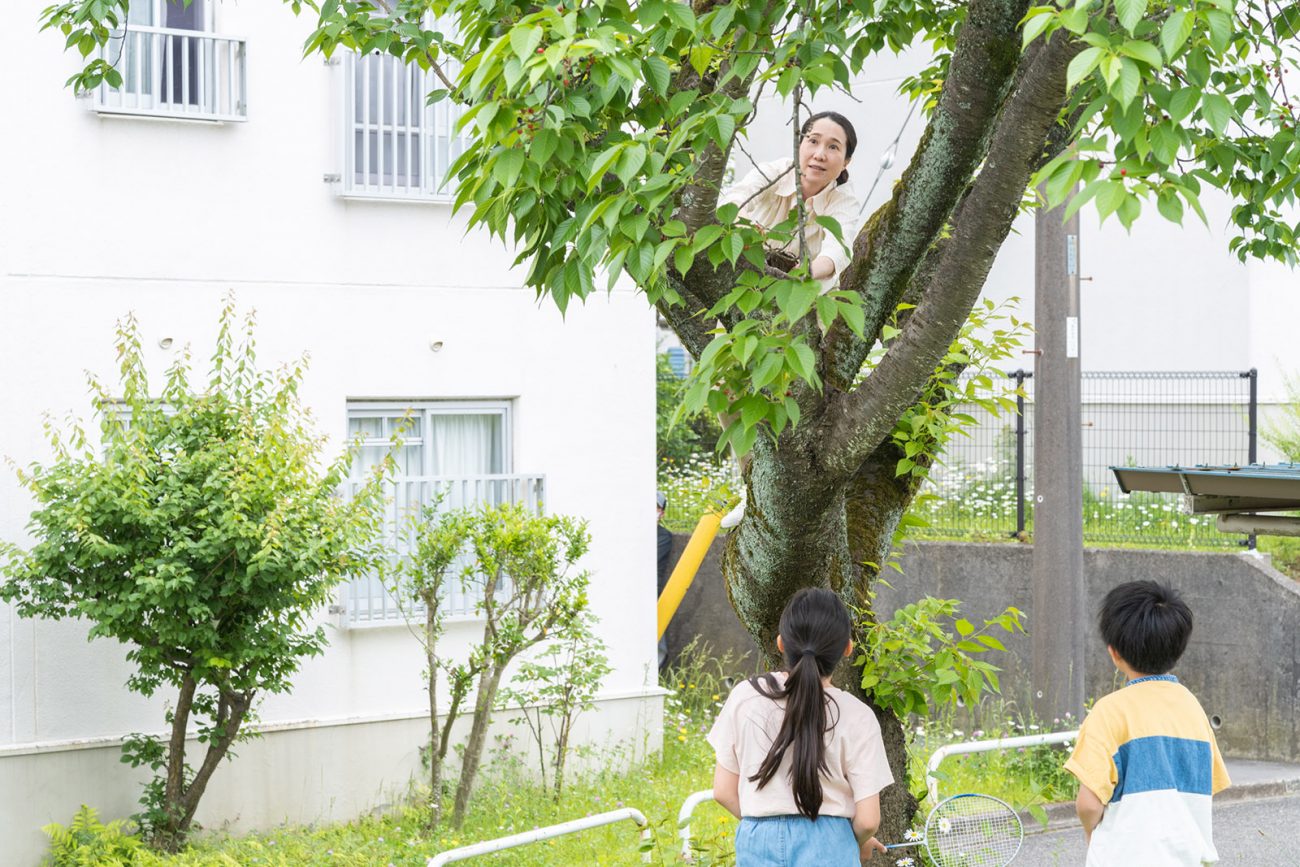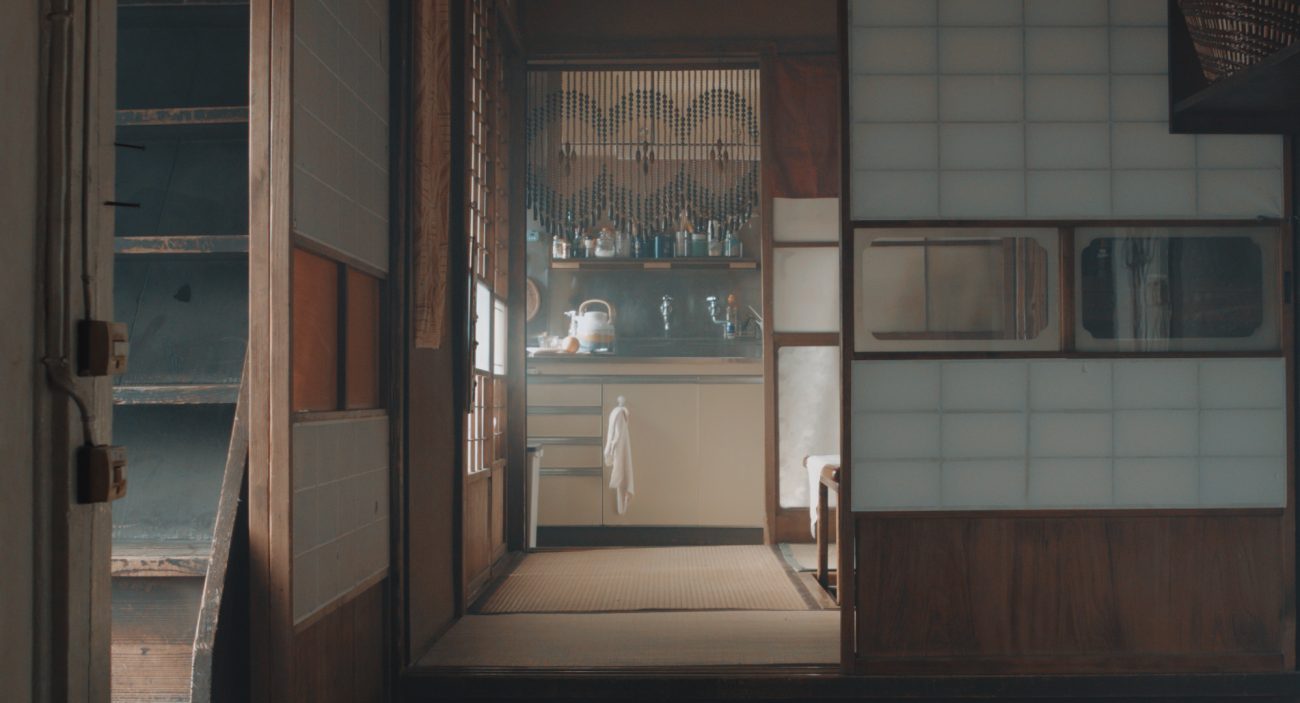From the beginning of her career, Yui Kiyohara has been one to watch.
When Yui Kiyohara made her feature directorial debut in 2017 with her graduate thesis Our House, she snagged the Grand Prix at the 2017 Pia Film Festival. Set in a two-storey house in a coastal town, teenage Seri (Nodoka Kawanishi) is troubled by her widowed mother’s new relationship. Meanwhile, another pair of women seem to occupy the same house in an alternate timeline, never meeting the mother and daughter. Our House’s off-kilter atmosphere and technical precision has drawn comparisons to the works of veteran filmmaker (and Kiyohara’s university mentor) Kiyoshi Kurosawa, who also gave his stamp of approval.
With her second work Remembering Every Night (2022), Kiyohara continues to meld the existential and mundane. On the same day, three women spanning three generations wander the Tama New Town residential district, each struggling with isolation and questions of their past and future.

Across both Our House and Remembering Every Night, Kiyohara’s confidence as a director — both stylistically and thematically — has quickly made her one of the most exciting filmmakers of her generation.
We spoke to director Kiyohara, assisted by translator Tomoko Takedani Sater, ahead of Remembering Every Night’s US release to find out more about how her filmmaking has evolved, finding inspiration on-set, and what’s her next experimental project.
The below interview has been edited for clarity.
Your two films, Our House and Remembering Every Night are like two sides of the same coin. Both are about isolation, but in specific [different] environments. Our House is mostly set in one location, while Remembering Every Night is set mostly outdoors. In your director’s statement, you shared that you grew up in Tama New Town, so you have a personal connection to it, but I was wondering why you wanted to set an entire film there?
In Remembering Every Night there are three female protagonists, and my previous film Our House has two protagonists. I wanted to create a story with three protagonists so that the cadence they create together is different from a story with two. The initial concept for Remembering Every Night was a different one. The setting was actually at a hotel, and you know a hotel has many different rooms, and it’s bigger than a house. There were three women — not necessarily interacting with each other — spending a day in the hotel, and we followed their day inside the hotel. [That] was the initial concept. But things changed, and I wanted to take them outside, so that I can imply that there are three protagonists, but there are other lives that unfold their worlds as well, so that’s how this film [Remembering Every Night] came about.

The use of frames and mirrors in Our House (2017)
The way the two films are shot also feel like opposites. In Our House, there are many shots of the characters in frames such as windows or mirrors, and also close-ups, with few wide shots. But in Remembering Every Night, there are many wide shots of the characters outdoors. Can you talk about how you shot the two films and if you had a different working process for Remembering Every Night compared to Our House? Do you compose your shots beforehand?
Yes, the shooting process was extremely different for these two films. In Our House, everything was structured: I had to come up with the blocking very precisely because we were filming inside the house. It was an actual house, it wasn’t a set. Because it’s an actual house, the angles and the space we had, there are a lot of limitations that we needed to work with. And that’s why there are a lot of repetitions that occur, because there were very limited angles we could use, and that’s how we came up with ideas on how to use the frames effectively, in terms of the visuals.
In contrast, in Remembering Every Night, nothing was planned like the previous work, because we were filming a lot outside, and you know, things change from second to second when you’re outside. I discussed it with my cinematographer [Yukiko Iioka], and we approached it as if we’re trying to report what’s happening outside, what’s unfolding in front of our eyes, so that was kind of the shooting process of Remembering Every Night.

Kumi Hyodo as Chizu in Remembering Every Night (2022)
Memory is a strong theme in both of your films. In Our House, Seri cannot let go of her father’s memory and thinks the house is haunted, while Sana (Mariwo Osawa) loses her memories. In Remembering Every Night, memory is experienced through photos, video recordings and oral storytelling. What are you trying to show through these different ideas, forms and presentations of memory?
With Our House, the house itself was the main inspiration for me, because it belonged to an old funeral merchant’s house, and it’s about a hundred years old. Over time, it changed hands, passing down to a charcoal merchant, then it became [a store for] milk, [then] tobacco, and now it doesn’t belong to any merchant anymore, it’s just a house. When I first visited it I could feel the history and the memories that have accumulated in that house. So that made me want to talk about memory in this first film of mine.
Similarly, with Remembering Every Night, it’s the memory that the town has, the memories that have accumulated in this town, and I used photographs and video footage to deal with the subject of memory. The video footage shown in the film of the children is actually from my childhood and my friends’ childhoods, so it’s actual video footage from real people. At the time, my parents were converting this video footage from analogue to digital format, and we got to watch it together. Since I was small during the time the footage was actually taken, I don’t have the actual recollection of what happened. But because I was watching the footage, I got to feel like I remembered [these events] happening. Watching the videos made me feel like I actually got to experience it, and have a memory of it. That got me thinking about how memory is so vague and shapeless in a way, and that’s the theme that I wanted to explore with Remembering Every Night.

Our House (2017)
That actually brings me to my next question, which is about the use of the video montage footage in Remembering Every Night. I found this montage of birthday celebrations of children very moving, but it’s also so different from the rest of the film. I wanted to ask why you chose to include this footage?
Chizu (Kumi Hyodo), the woman at the beginning of the film who’s looking for a job, says that it’s her birthday today, but nobody is celebrating it with her. But when she was a child, I am sure her birthdays were celebrated as she was growing up. So I wanted to remind the viewer of such a forgotten time, so that’s one of the reasons why I wanted to put the birthday video footage into the film.
The second reason is that later in the film, Natsu (Ai Mikami), the young woman, plays with fireworks with her friend, and then she remembers the boyfriend who has passed, right? What really moves me about the visual medium is that those of us who are still here and those people who are no longer with us, visually, if you have two footage side by side, the past and the present can exist in the same timeframe, in the same sort of equal value, and that really moves me. So that’s why I wanted to have the footage that represents the past, and then the footage that represents the present.

The music in Remembering Every Night is really unique, and sometimes it doesn’t even seem to be made out of musical instruments at all, but sounds in the environments. Can you talk about how the music in the film came about?
In the beginning of the film you see the band members, and they are the actual band members of Jon no Son, who created the music of the film. I asked them to be in the film itself, because I wanted the music to be sort of a character in the story as well. I wanted the sound that they create. I didn’t want the music in this film to be something that creates the emotional dynamics for the viewer or anything like that. I wanted the sound to exist in that town. I wanted the music to exist in the town. That’s what I told them, and that’s how they created the music for this film.
In your director’s statement, you wrote that there was a previous film subject that was postponed due to the pandemic. Will that project be happening? Are you working on anything new that you can talk about?
So there’s nothing in progress at the moment, but I just recently finished a film about my grandmothers. My grandmothers on both sides are still alive, and I interviewed them, and sort of created somewhere between a documentary and a fictional narrative. It’s a bit of an experimental film, and that’s what I’ve been working on, and it has just been completed.
Both of your films are really unique in both subject matter and style. I feel like I’ve not seen anything like it before, so I wonder if you have filmmakers you admire or are influenced by?
That’s really a tough question [laughs]. There are many directors I admire. In making Remembering Every Night, I’d say I was very keenly aware of the work of Apichatpong Weerasethakul, because of his style and sense of rhythm, which was very influential on me. I’ve also heard that he takes very good care of his staff and crew, and I really believe that what happens on the set, it’s really important to have a good atmosphere and good teamwork with the crew. I work with a low budget, so what kind of atmosphere we have on the set is really reflected in the film itself, so I try to make sure that on my set there’s no hierarchy, everyone’s on equal footing, [and] there’s easy communication. So that’s through him that I get my inspiration from a lot.
Both of Yui Kiyohara’s films, Our House and Remembering Every Night, will screen at New York’s Film at Lincoln Center from September 15, with further theatrical screenings of Remembering Every Night playing throughout the US.
